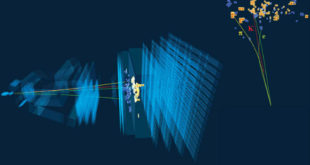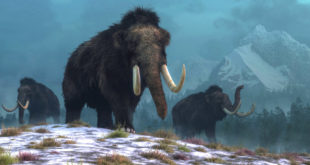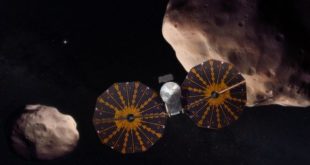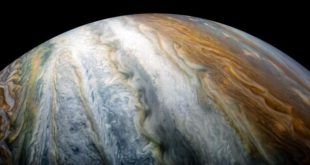If you’ve ever wanted to help find an exoplanet, this is your chance. There’s a new open research initiative that invites participants to help identify exoplanets using simple visual pattern matching — and it’s open to anybody who wants to help. You don’t even have to own a telescope. The …
Read More »Crab In Burmese Amber
The new fossil from the Cretaceous of Myanmar preserves large compound eyes, delicate mouthparts, and even gills. Cretapsara athanata, a modern-looking eubrachyuran crab in Burmese amber. Image credit: Luque et al., doi: 10.1126/sciadv.abj5689. True crabs (members of the infraorder Brachyura) are an iconic group of crustaceans whose remarkable diversity of …
Read More »Novel Tests New Physics
Physicists from CERN’s LHCb (Large Hadron Collider beauty) Collaboration have carried out new tests of lepton universality, one of the basic principles of the Standard Model of particle physics. This principle states that the Standard Model treats the three charged leptons — electrons, muons and taus — identically, except for …
Read More »Rapid Climate Change
In a large-scale environmental DNA metagenomic study of ancient plant and mammal communities, an international team of researchers have analyzed 535 permafrost and lake sediment samples from across the Arctic spanning the past 50,000 years. A trio of woolly mammoths (Mammuthus primigenius) trudges over snow covered hills; behind them, mountains …
Read More »NASA’s Lucy Spacecraft
NASA’s Goddard Space Flight Center/Conceptual Image Lab/Adriana Gutierrez NASA’s Lucy spacecraft is having difficulties with its solar panels. The spacecraft launched on Oct. 16th without incident, and sucessfully unfolded both its solar panels. But only one of its panels successfully latched into position. Telemetry via NASA’s Deep Space Network shows …
Read More »Ancient Space Dust
When the solar system was first organizing itself, a disk of gas and dust took shape around the sun’s central mass. It eventually sorted itself into the system of planets we see today. But there are things we don’t know about how that happened. One observation that has been challenging …
Read More »Planet Orbiting Dead Star
Humanity has existed for 300,000 years, give or take a millennium. That might sound like a long time when the average human lives at most a few decades, but it’s really just a cosmic blink of the eye. Even if Homo sapiens exceeds all expectations and survives both political strife …
Read More »Physicists Unprecedented Precision
Physicists have performed an improved measurement of the free neutron lifetime using the UCNτ apparatus at the Los Alamos Neutron Science Center. Their results, published in the journal Physical Review Letters, represent a more than two-fold improvement over previous measurements. Gonzalez et al. report an improved measurement of the free …
Read More »Quantum Teleportation
Quantum teleportation of an unknown input state from an outside source onto a quantum node is considered one of the key components of long-distance quantum communication protocols. It has already been demonstrated with pure photonic quantum systems as well as atomic and solid-state spin systems linked by photonic channels. Now, …
Read More »Tardigrade Fossil Discovered
Again with the accidental discoveries! It’s the third unexpected find within six weeks. This time, the good news was born from debris in a hunk of Dominican amber. The researchers were studying ants from the Miocene period, trapped in a piece of amber. A closer look at the “debris” inclusions, …
Read More » #Bizwhiznetwork.com Innovation ΛI |Technology News
#Bizwhiznetwork.com Innovation ΛI |Technology News









